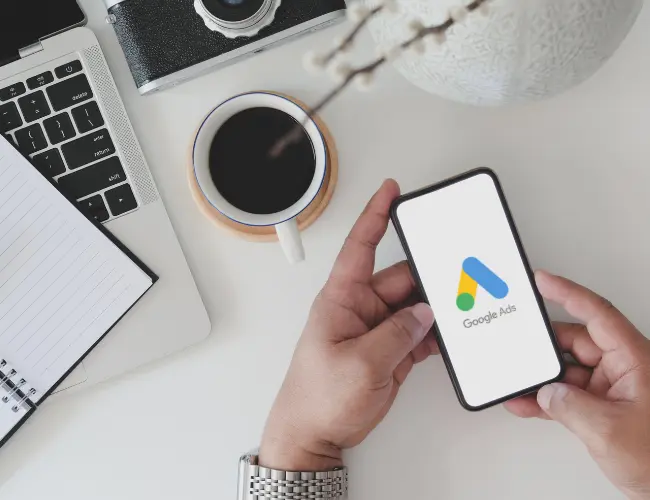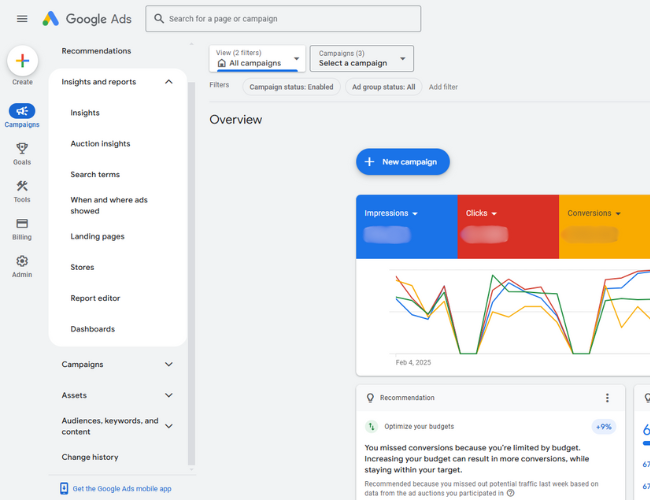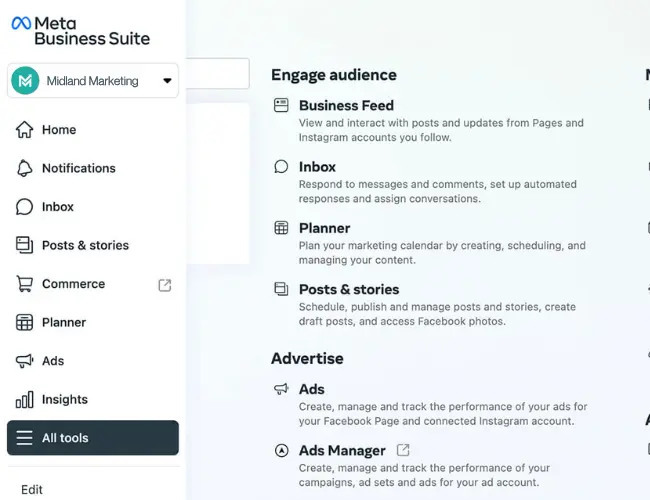Choosing the Best PPC Channels for Your Goals
Blogs | PPC
Written By: Nyah Mallen
Choosing the Best PPC Channels for Your Goals
Blogs | PPC
Written By: Nyah Mallen
Introduction
Choosing the right PPC channels for your campaigns can feel overwhelming with so many options available. The pressure increases when choosing the wrong platform, leading to wasted ad spend and missed opportunities. After all, traffic from PPC ads is 50% more likely to convert than traffic from organic methods, according to Moz.
For business owners, PPC is more than just a way to drive traffic – it’s a vital component of your digital marketing strategy and a direct route to higher conversions. While choosing the wrong platform can affect your success, the right PPC channel can optimise your budget, target the right audience, and help you meet your business goals.
With so many platforms to consider, picking the right one can be a challenge. In this article, we’ll explore some of the most popular PPC channels and their benefits, helping you make an informed decision on the best platform to suit your needs.

What Are PPC Channels?
PPC channels, also known as PPC ad networks, are platforms where businesses can run paid advertising campaigns to drive traffic, boost brand visibility, and generate conversions. These channels enable businesses to display ads in various formats, such as text, images, and videos, while targeting specific audiences based on their demographics, interests, or search intent.
Each PPC channel offers unique features tailored to different business goals. Some platforms focus on targeting users based on their intent, while others prioritise building brand awareness.
By selecting the right PPC channels, businesses can ensure their ads reach the most relevant audiences, increasing the likelihood of higher engagement, more conversions, and ultimately, a better ROI.
Why Use PPC Advertising?
PPC advertising is one of the most effective ways to drive targeted traffic, generate leads, and boost sales. Unlike organic marketing, which takes time to build momentum, PPC delivers immediate visibility, allowing businesses to appear at the top of search results or within social media feeds almost instantly.
One of the biggest advantages of PPC is control. With Pay Per Click advertising, advertisers can set budgets, refine their audience targeting, and track performance in real time! Whether you’re looking to attract high-intent searchers, build brand awareness, or re-engage past visitors, PPC allows you to reach the right audience at the right time.
For more reasons to use this advertising strategy, check out our article on the benefits of PPC.

Different Types of PPC Advertising
Before we look at some of the most popular PPC ad networks, and which one would be best for you, it’s first important to understand the different types of paid ads you can run on each platform. When it comes to PPC advertising, businesses have a variety of ad types to choose form, each with its own strengths. Some of the most common and effective PPC ad types include:
- Search Ads: These text-based ads appear at the top or bottom of search engine results when users search for terms related to your business. They are highly effective for capturing intent-driven traffic.
- Display Ads: These visually engaging ads can be in the form of banners, images, or videos, and are shown to users as they browse websites within the ad network. They’re great for brand awareness and reaching users further down the sales funnel.
- Social Media Ads: Displayed on platforms like Facebook, Instagram, LinkedIn, and X (formerly Twitter), social media ads allow businesses to target highly specific audiences based on demographics, interests, and behaviours. These ads are designed to be eye-catching and interactive.
- Shopping Ads: These ads showcase product images, prices, and other relevant details directly in search results, giving potential customers a clear view of what you offer. They’re ideal for eCommerce businesses looking to drive product sales.
- Native Ads: Designed to blend seamlessly with the platform’s content, native ads mimic the look and feel of regular content, making them less intrusive and more engaging for users. They work well for content-driven marketing and promoting thought leadership.
- Retargeting Ads: These ads target users who have previously interacted with your website or app but didn’t complete a desired action, such as making a purchase. Retargeting ads “follow” users across the web, gently nudging them to return and finish what they started.
Google Ads
Google Ads is a powerhouse in digital advertising, dominating over 80% of the online market share in the UK alone. Its biggest strength lies in flexibility, allowing businesses to run search, display, shopping, and retargeting campaigns across Google Search, YouTube, and any websites part of the Google Search Network.
This versatility makes it ideal for both B2B and B2C businesses looking to drive traffic, generate leads, and boost sales. Advanced targeting options help advertisers reach the right audience based on search intent, demographics, and user behaviour.
However, Google Ads’ popularity means high competition, driving up costs for competitive keywords. Businesses must optimise their campaigns carefully to maximise ROI.

Microsoft Ads
Microsoft (Bing) Ads is a valuable yet often overlooked PPC platform. While it has a smaller market share than Google, it still reaches over a billion users across Bing, Yahoo, and AOL, offering a strong alternative for advertisers.
One of its biggest advantages is lower competition, making CPC (Cost Per Click) bidding more affordable than Google Ads. Businesses can run search, shopping, and audience network ads, allowing them to target users across Microsoft’s ecosystem and partner sites.
Microsoft Ads is particularly effective for B2B businesses and older demographics, as Bing’s user base skews toward professionals and higher-income households. Its integration with LinkedIn targeting also helps refine audience segmentation.
However, its smaller audience size means lower search volume, which may limit reach. For businesses looking to diversify their PPC strategy, Microsoft Ads can be a cost-effective addition to a multi-channel approach.
Meta Business Suite
Meta Business Suite (formerly Facebook Business Manager) is a popular PPC platform, reaching nearly 3 billion users across Facebook and Instagram.
Its biggest strength is advanced audience targeting, allowing businesses to refine ads based on demographics, interests, and behaviours. Meta supports image, video, carousel, and story ads, making it ideal for visual storytelling and engagement-driven campaigns.
Best suited for B2c brands, eCommerce, and lead generation, Meta Ads excel at reaching and nurturing potential customers. However, rising competition and ad costs mean businesses need a strong strategy to maximise ROI.

TikTok Ads
TikTok Ads is a dynamic PPC platform, with the potential to reach over 1 billion active adult users worldwide, primarily among younger demographics.
Its standout feature is highly engaging, short-form video content, which is perfect for brands looking to capture attention quickly. TikTok offers a range of ad formats, including in-feed ads, branded hashtag challenges, and TopView ads, all designed to encourage user interaction and creativity.
Best suited for B2C brands, especially those targeting Gen Z and Millennials, TikTok Ads excels at creating viral campaigns and boosting brand awareness. However, the platform’s fast-paced nature and younger audience may not be ideal for all business types. It’s worth noting that ads can also get quite costly, with a minimum budget of £20 a day, and only increasing if you want to compete for the TopView ads.
Native Ads
Native ads seamlessly blend with platform content, making them less intrusive and more engaging for users. Platforms like Pinterest, Taboola, and many other platforms, offer ad formats such as sponsored posts and recommended content, which align with users’ interests and browsing behaviour.
These ads are ideal for businesses focused on content marketing, thought leadership, and brand awareness, as they reach audiences in a natural, authentic way. However, they require creative, high-quality content that matches the platform’s tone to avoid appearing overly promotional. When executed correctly, native ads drive engagement, increase visibility, and deliver results without disrupting the user experience.

Finding the Best PPC Platforms for Your Business
PPC advertising offers great potential for driving business growth and engaging your audience at the right moment. With many platforms to choose from, Google Ads stands out for its vast reach and versatility, making it ideal for a wide range of campaigns.
However, the best platform for your business depends on your goals. For B2C businesses focused on authentic engagement, Meta Business Suite and TikTok Ads are great options. If targeting professionals or B2B, Microsoft Ads may be a better fit, while Taboola excels for native advertising.
To succeed with PPC, campaigns need to be strategic and data-driven. By targeting the right audience and continuously optimising your ads, you can boost conversions and maximise ROI.
Regardless of the platform you choose, PPC is one of the most effective and scalable ways to grow your business and compete with larger brands.
If you’re unsure where to start, we’re here to help. At Midland Marketing, we specialise in creating tailored PPC strategies that deliver real results for businesses like yours.
Want some more?
Latest Insights & News

How to Build Your Brand With Colour in Web Design
Colour in web design is more than aesthetics — it shapes first impressions, builds recognition, and drives engagement. Learn how to use colour strategically to define your brand and connect with your audience across your website and beyond.

What is White Space & Why You Shouldn’t Be Afraid to Use It
White space, sometimes called negative space, is a key design element. Learn how using white space in web design can improve readability, UX, and user engagement for your business by creating clean, focused, and professional layouts.

Search Intent SEO Best Practices
Search intent SEO helps you go beyond keywords and focus on user needs. Whether someone’s ready to buy or just looking for info, understanding intent is key to better content. Read our guide to learn how to align your content with what users really want.

